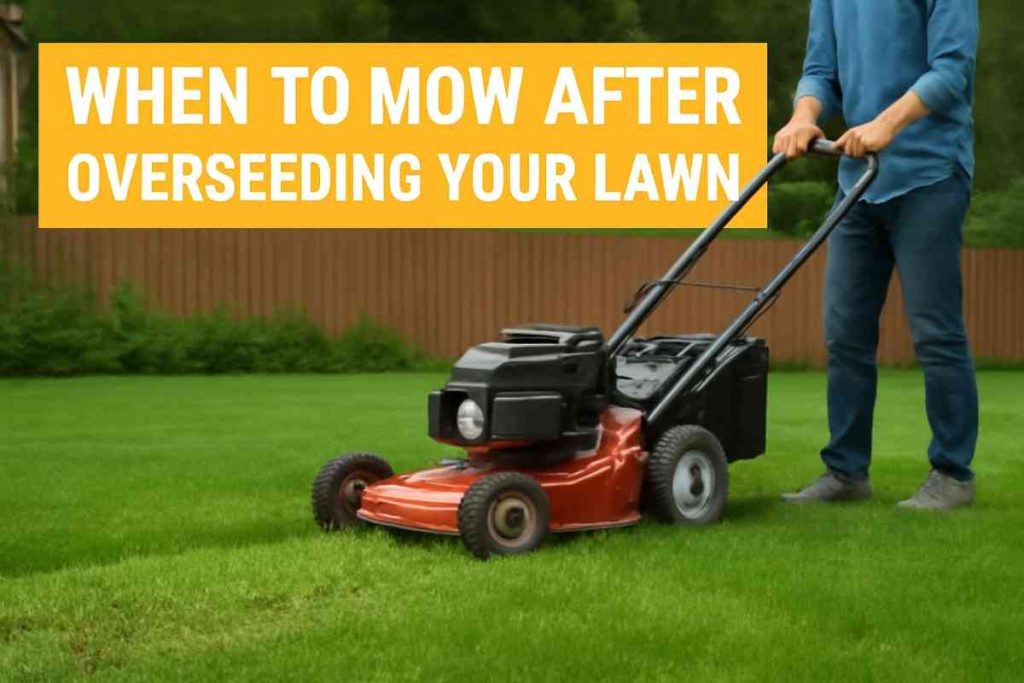Overseeding gives your lawn a fresh start. It’s a smart move when your grass is patchy, thin, or tired-looking. But once those new seeds are down, you can’t just go back to mowing like usual.
Timing is everything.
Cut too soon, and you risk damaging those tender new blades. Wait too long, and your yard might look wild. So, when should you mow after overseeding? Let’s break it down—step by step.
What Happens to Grass After Overseeding
Think of overseeding like planting a new garden right on top of an old one.
After spreading seed, the grass starts its slow transformation. Here’s what’s going on under the surface:
- Germination: This is when seeds crack open and sprout. It usually takes 5 to 21 days, depending on the grass type and weather.
- Rooting: Tiny roots push into the soil, anchoring each new plant.
- Leaf Growth: The first baby blades show up. They’re thin, soft, and fragile.
At this stage, the grass is vulnerable. Any heavy pressure—like a mower’s wheels or even your feet—can crush it. That’s why it’s key to wait before mowing.
How Long to Wait Before Mowing New Grass
Here’s the golden rule: Wait until the new grass is at least 3 inches tall before even thinking about mowing.
Why 3 inches?
Because by then, the roots have had time to grow, and the blades are strong enough to stand up to a mower. If you cut before that, you’ll likely pull the young plants right out of the ground. All that effort? Gone in a single mow.
Depending on your seed type and weather, this could take 2 to 4 weeks. Patience really does pay off here.

Signs Your Lawn Is Ready for Its First Mow
Not sure if it’s time? Don’t guess—look for these signs:
- Uniform Height: Most of the grass has reached 3 to 3.5 inches tall.
- Full Coverage: No more large patches of bare soil.
- Firm Feel: Step lightly. If the ground feels squishy or soft, hold off a few more days.
And if you see blades bending under their own weight? That’s your cue. It’s time to mow—gently.
Read Also – How to Fill Holes in Yard and Repair Dig Spots the Right Way
Mistakes to Avoid When Mowing New Grass
It’s easy to get excited and rush the first mow. But there are a few common slip-ups that can wreck your fresh lawn. Here’s what to avoid:
- Cutting Too Short: Never cut more than one-third of the blade height. If your grass is 3 inches tall, don’t cut more than 1 inch.
- Dull Blades: A dull mower blade tears the grass instead of slicing it. That can stress or even kill young plants. Sharpen your blade first.
- Mowing Wet Grass: Water weighs down blades and makes it harder for your mower to get a clean cut. Wet soil also increases the risk of pulling up roots.
- Heavy Equipment: Avoid big riding mowers early on. Use a lightweight push mower if you can.
And maybe most important: don’t mow in a rush. Take your time. Go slow. That first cut matters more than you think.
Conclusion
Overseeding is a great way to revive a tired lawn—but mowing too soon can undo all your hard work.
So what’s the takeaway?
Wait until your new grass is at least 3 inches tall. Watch for signs like full coverage and a firm surface. Use sharp blades, avoid mowing wet, and never cut too short.
Be gentle. Be patient.
Treat your new lawn like it’s still growing up—because it is. A little care now will reward you with a thick, healthy lawn for the whole season.

